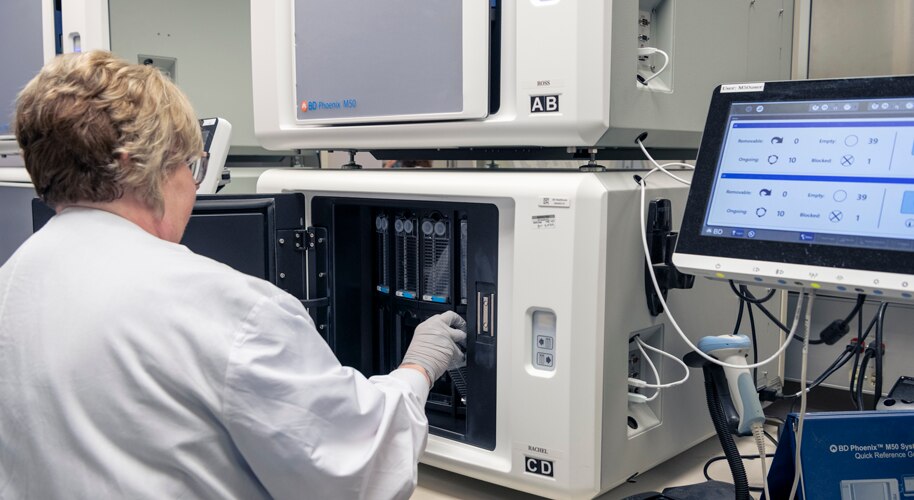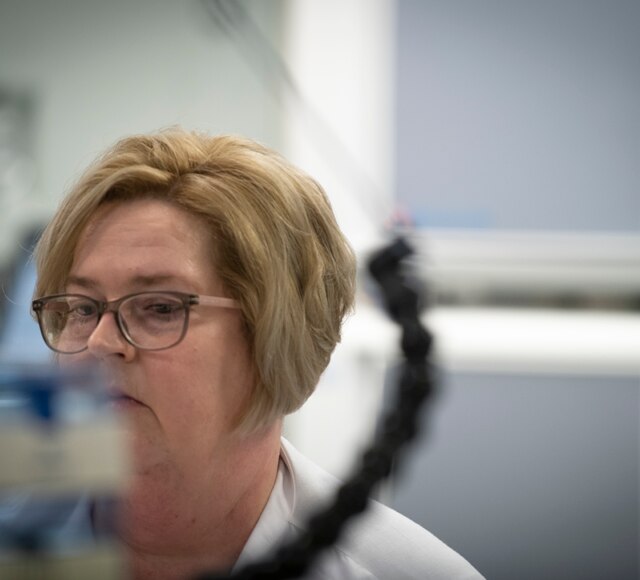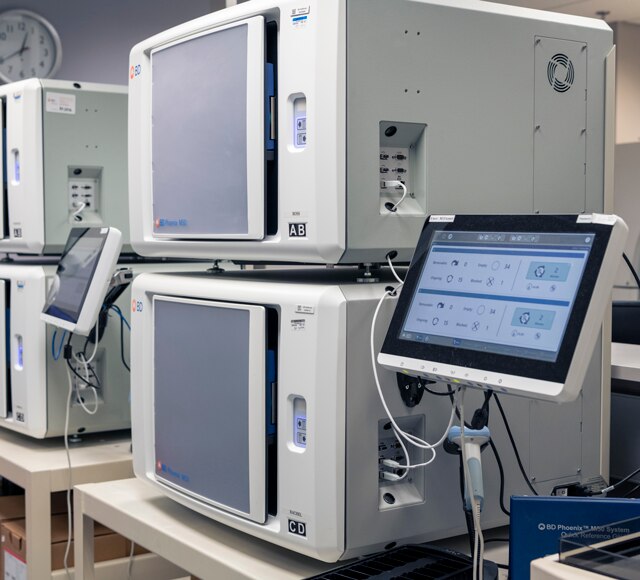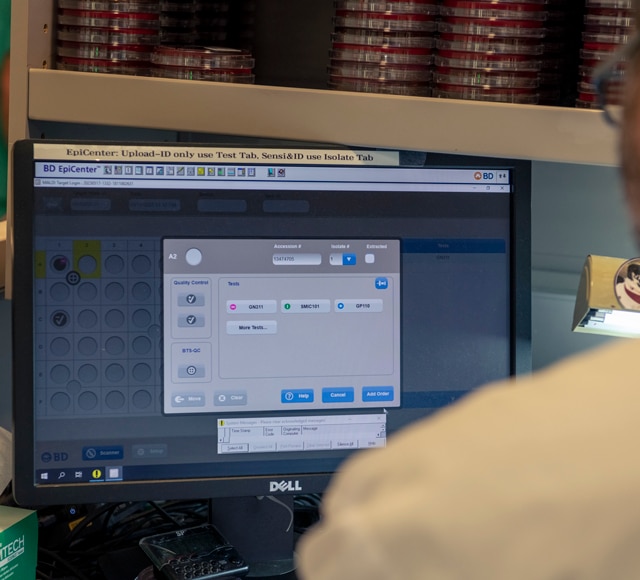Sort by:
-
BD Phoenix™ M50 instrument
SKU/REF 443624
-
BD Phoenix™ M50 instrument starter kit
SKU/REF 443625
Marries performance with ease of use to provide timely and accurate identification and susceptibility testing results.1-6

With an extensive panel well count and antimicrobial selection, true doubling dilutions, and extended dilutions for lowering breakpoints, the BD Phoenix™ M50 Automated Microbiology System marries performance with ease of use to provide the timely and accurate pathogen identification and susceptibility results that clinicians need to help guide their therapy and patient management decisions.1-6
The BD Phoenix™ M50 System can identify most clinically significant Gram-negative and Gram-positive bacteria, as well as yeast. In addition to accurately confirming known resistance, the BD Phoenix™ M50 Instrument has demonstrated performance in detecting newly emerging resistance to antimicrobials in microorganisms that historically have been susceptible.1,2
Onboard the BD Phoenix™ M50 System today and empower your antimicrobial stewardship teams with the timely, accurate, and actionable information they need to optimize antimicrobial therapy and patient outcomes, and to help stop the spread of antimicrobial resistance.1-7

Timely, accurate microorganism identification and susceptibility testing
The BD Phoenix™ M50 System uses a unique dual growth detection technology, combining an oxidation-reduction indicator and a turbidity measure for more accurate antimicrobial susceptibility results.1
In addition, the BD Phoenix™ M50 System employs a delayed growth algorithm that defers reporting for slow-growing organisms until additional instrument readings are collected, which provides additional assurance that results are accurate.1

On-panel true doubling dilutions
The BD Phoenix™ M50 System utilizes on-panel true doubling dilutions of antimicrobial concentrations to determine minimum inhibitory concentration (MIC)-based susceptibility results for most clinically significant Gram-negative and Gram-positive bacteria.
Antimicrobial resistance markers include* methicillin-resistant Staphylococcus aureus (MRSA), mecA-mediated resistance, vancomycin-resistant S. aureus (VRSA) and Enterococcus spp., vancomycin-resistant S. aureus (VRSA) and Enterococcus spp. (VRE), extended-spectrum β-lactamase (ESBL)-producing organism, high-level aminoglycoside resistant (HLAR) Enterococcus and Streptococcus spp., carbapenemase-producing organism (CPO), and inducible clindamycin resistance (iMLSb).

Detection of emerging resistance
Susceptibility testing for emerging resistance detection and extended MIC ranges to meet CLSI breakpoint guidelines often requires multiple offline tests that can reduce lab efficiency and increase costs.4,8
The BD Phoenix™ M50 System uses dual growth detection technology and innovative panel design with a wide range of antibiotics, extended dilutions, and multiple resistance detection algorithms to provide the foundation for the detection of emerging resistance.1
Learn more about the BD Phoenix™ Emerge Panels.

Modularity and ease-of-use
The BD Phoenix™ M50 Instrument offers a compact and stackable design (up to two instruments) that allows for increased testing volumes by doubling capacity within the same footprint. Furthermore, the system requires no reagent additions post inoculation and few supplemental tests for final result determination, while utilizing leak-resistant, room-temperature panel storage.
The BD Phoenix™ AP automated inoculum preparation instrument can be combined with the BD Phoenix™ M50 System to help reduce sample preparation workflow burden.9,10

Robust, customizable data management
Monitoring, analyzing and communicating microbiology data in a timely manner can directly impact patient care. However, obtaining, organizing and communicating this information is labor intensive.11,12 To provide timely, optimized care and pursue consistent data-driven improvements to emerging antimicrobial resistance and healthcare-associated infections, clinicians need rapid, real-time access to relevant diagnostic data.13
The BD EpiCenter™ Microbiology Data Management System interfaces with the BD Phoenix™ M50 Instrument and provides intuitive, on-demand antibiogram generation, as well as custom alerts for critical results (e.g., CPO, VRSA, ESBL) to support infection prevention and antimicrobial stewardship initiatives.14
* Depending on BD Phoenix™ panel type and organism identification
**BD internal studies—data on file
Our collection of literature on industries and on our offerings gives you information you can use to continue striving for excellence.
We support the healthcare industry with market-leading products and services that aim to improve care while lowering costs. We host and take part in events that excel in advancing the world of health™.
Find our training resources to help improve your clinical practices as part of our goal of advancing the world of health.
We promote clinical excellence by providing various resources on best practices, clinical innovations and industry trends in healthcare.
*Non-exhaustive list. Depending on BD Phoenix™ panel type and organism identification.